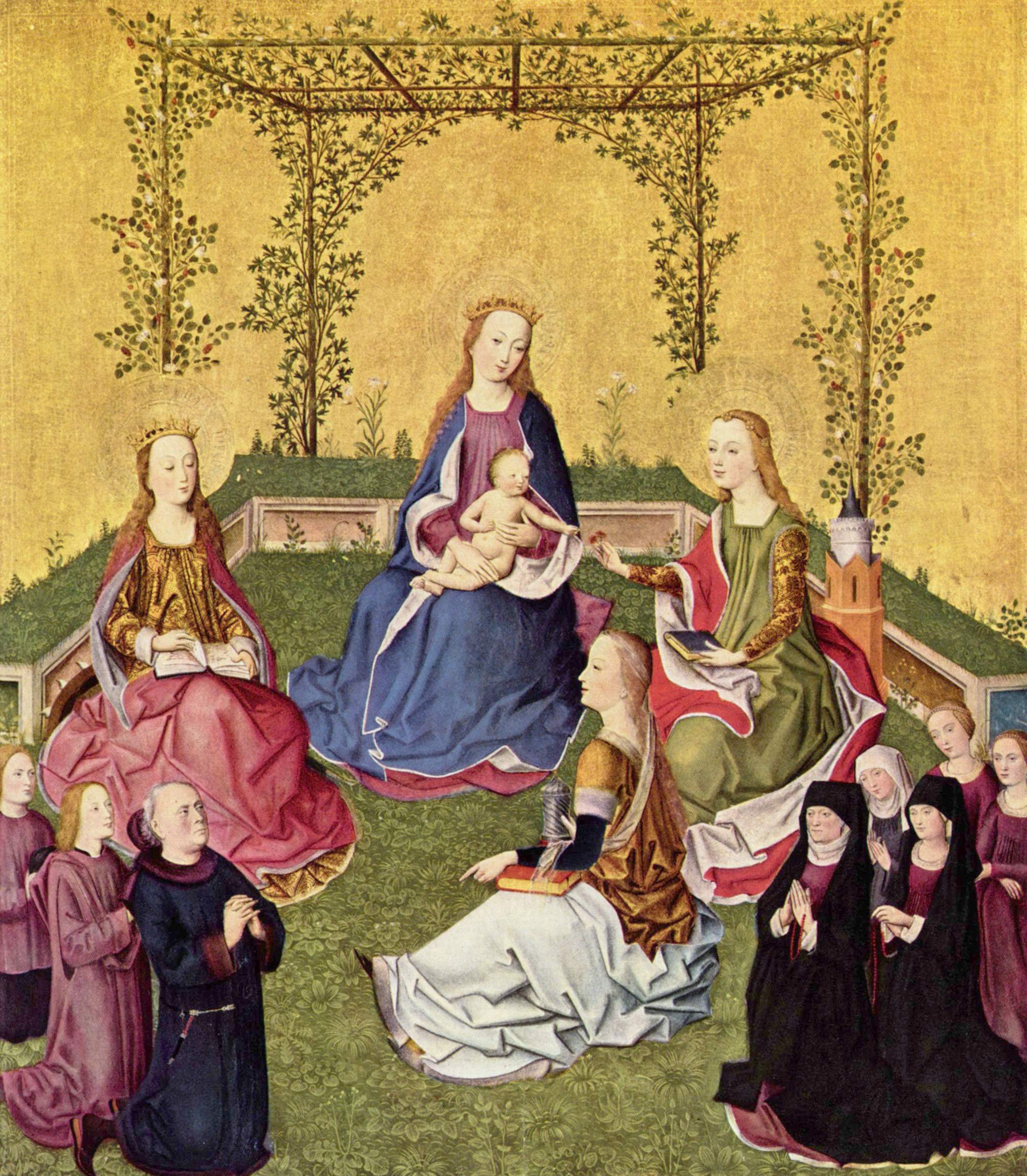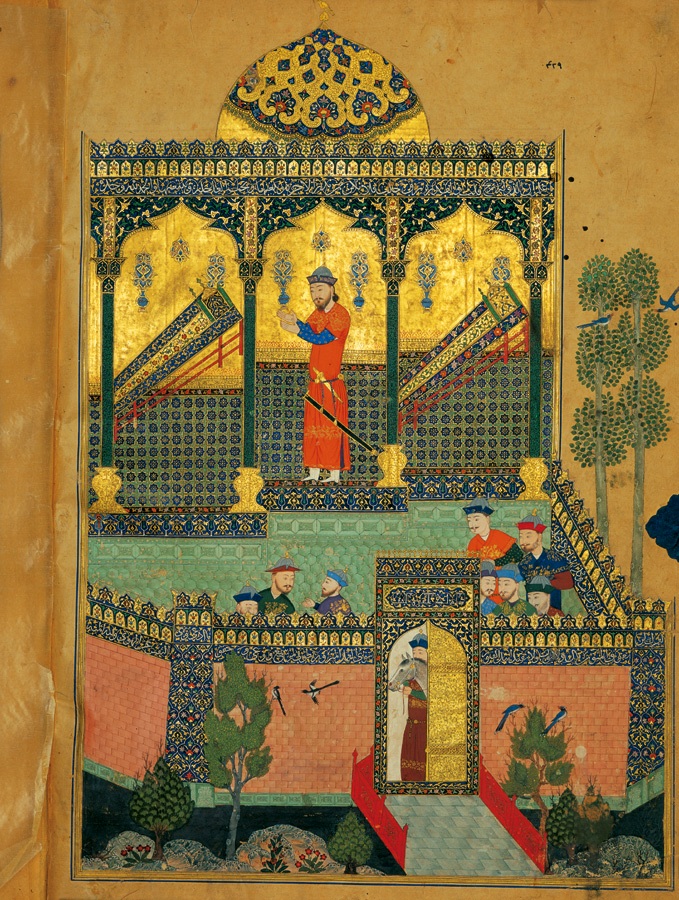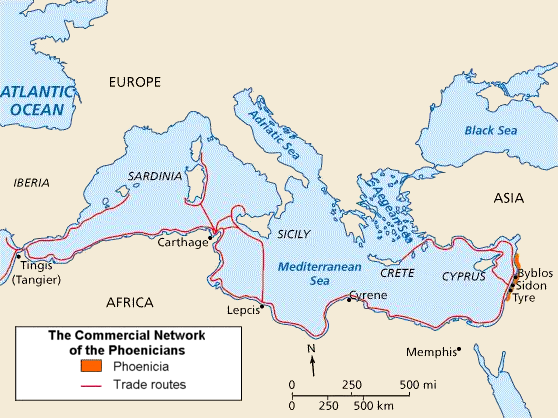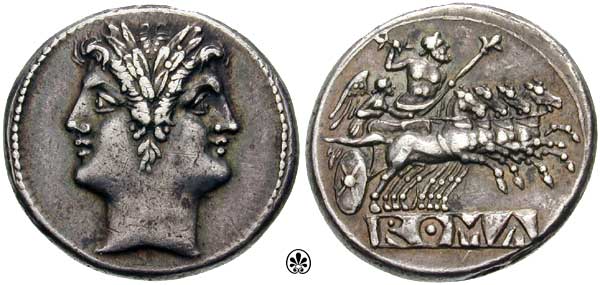-some suggestion:
Venezia from
Phoenicia (
; from the Ancient Greek:
Φοινίκη,
Phoiníkē) was a thalassocratic, ancient Semitic-speaking Mediterranean civilization that originated in the Levant, specifically Lebanon, in the west of the Fertile Crescent. Scholars generally agree that it was centered on the coastal areas of Lebanon and included northern Israel, and southern Syria reaching as far north as Arwad, but there is some dispute as to how far south it went, the furthest suggested area being Ashkelon. Its colonies later reached the Western Mediterranean, such as Cádiz in Spain and most notably Carthage in North Africa, and even the Atlantic Ocean. The civilization spread across the Mediterranean between 1500 BC and 300 BC.
Phoenicia is an ancient Greek term used to refer to the major export of the region, cloth dyed Tyrian purple from the Murex mollusc, and referred to the major Canaanite
port towns; not corresponding precisely to Phoenician culture as a
whole as it would have been understood natively. Their civilization was
organized in city-states, similar to those of ancient Greece,, centered in modern Lebanon, of which the most notable cities were Tyre, Sidon, Arwad, Berytus, Byblos, and Carthage.
Each city-state was a politically independent unit, and it is uncertain
to what extent the Phoenicians viewed themselves as a single
nationality. In terms of archaeology, language, lifestyle, and religion
there was little to set the Phoenicians apart as markedly different from
other residents of the Levant, such as their close relatives and neighbors, the Israelites.
Around 1050 BC, a Phoenician alphabet was used for the writing of Phoenician.It became one of the most widely used writing systems,
spread by Phoenician merchants across the Mediterranean world, where it
evolved and was assimilated by many other cultures, including the Roman
alphabet used by Western civilization today.
Connections with Greek mythology
In both Phoenician and Greek mythologies, Cadmus is a Phoenician prince, the son of Agenor, the king of Tyre in South Lebanon. Herodotus credits Cadmus for bringing the Phoenician alphabet to Greece approximately sixteen hundred years before Herodotus' time, or around 2000 BC, as he attested:
These Phoenicians who came with
Cadmus and of whom the Gephyraeans were a part brought with them to
Hellas, among many other kinds of learning, the alphabet, which had been
unknown before this, I think, to the Greeks. As time went on the sound
and the form of the letters were changed.
— Herodotus, The Histories, V.58
.
Plato
In his
Republic, Greek philosopher Plato
contends that the love of money is a tendency of the soul found amongst
Phoenicians and Egyptians, which distinguishes them from the Greeks who
tend towards the love of knowledge. In his
Laws, he asserts that this love of money has led the Phoenicians and Egyptians to develop skills in cunning and trickery (πανουργία) rather than wisdom (
σοφία).
In his
Histories, Herodotus gives the Persian and Greek
accounts of a series of kidnappings that led to the Trojan War. While
docked at a trading port in Argos, the Phoenicians kidnapped a group of
Greek women including King Idacus's daughter, Io. The Greeks then
retaliated by kidnapping Europa, a Phoenician, and later Medea. The
Greeks refused to compensate the Phoenicians for the additional
abduction, a fact which Paris used a generation later to justify the
abduction of Helen from Argos. The Greeks then retaliated by waging war against Troy. After Troy's fall the Persians considered the Greeks to be their enemy.
In the Bible
Hiram (also spelled Huran), the king of Tyre, is associated with the building of Solomon's temple.
1 Kings 5:1
says: "Hiram king of Tyre sent his servants to Solomon; for he had
heard that they had anointed him king in the place of his father: for
Hiram was ever a lover of David." 2 Chronicles
2:14 says: "The son of a woman of the daughters of Dan, and his father
[was] a man of Tyre, skillful to work in gold, silver, brass, iron,
stone, timber, royal purple (from the Murex), blue, and in crimson, and
fine linens; also to grave any manner of graving, and to find out every
device which shall be put to him ..."
This is the architect of the Temple, Hiram Abiff of Masonic lore.
Later, reforming prophets railed against the practice of drawing royal wives from among foreigners: Elijah execrated Jezebel, the princess from Tyre in South Lebanon who became a consort of King Ahab and introduced the worship of her god Baal.
Long after Phoenician culture flourished, or Phoenicia existed as
a political entity, Hellenized natives of the region where Canaanites
still lived were referred to as "Syro-Phoenicians", as in the
Gospel of Mark 7:26: "The woman was a Greek, a Syro-phoenician by birth".
The word
Bible itself derives from Greek
biblion, which means "book" and either derives from, or is the (perhaps ultimately Egyptian) origin of
Byblos, the Greek name of the Phoenician city Gebal.
LegacyThe legacies of the Phoenicians include:
- The spread of the alphabet throughout the Mediterranean extended literacy beyond a narrow caste of hierarchical priests.
- They re-opened the trade routes in the Eastern Mediterranean that
connected the Egyptian and Mesopotamian civilizations after the long
hiatus of the Bronze Age collapse recovered, beginning the "Orientalising" trend later seen in Greek art.
- They invented a more democratic and flatter oligarchic social structure than any people prior to the Athenian revolution, and in this were an inspiration to Greek constitutional government.[citation needed]
- They pioneered the development of multi-tiered oared shipping
throughout the Mediterranean region, being the first people exploring
beyond the Straits of Gibraltar.
- They were the first Eastern Mediterranean people to colonise the Western Mediterranean in any significant way (The Shardana may have preceded them in Sardinia), opening up urban development and trade in this region.
- Greeks, Etruscans, and Romans freely admitted what they owed to the Phoenicians, and Phoenician influence can be traced in the Iberian and Celtic worlds from the 8th century BC onwards.
- It is possible that Zeno of Citium, the founder of Stoicism, was of Phoenician heritage. Diogenes Laërtius writes that Crates once chastised Zeno, crying out, "Why run away, my little Phoenician?"
https://en.wikipedia.org/wiki/Phoenicia
-ik its only wiki, but that tends to change
Although no surviving historical records deal directly with the founding of Venice....This is further supported by the documentation on the so-called
'apostolic families', the twelve founding families of Venice who elected
the first doge, who in most cases trace their lineage back to Roman
families.()
In 828 the new city's prestige increased with the acquisition of the claimed relics of St Mark the Evangelist from Alexandria, which were placed in the new basilica. (Winged lions, visible throughout Venice, are the heraldic crests
of St. Mark.) The patriarchal seat also moved to Rialto. As the
community continued to develop and as Byzantine power waned, its
autonomy grew, leading to eventual independence.
From the 9th to the 12th century, Venice developed into a city state (an Italian thalassocracy or
Repubblica Marinara: the other three of these were Genoa, Pisa, and Amalfi). Its strategic position at the head of the Adriatic made Venetian naval and commercial power almost invulnerable.
[citation needed] With the elimination of pirates along the Dalmatian coast, the city became a flourishing trade center between Western Europe and the rest of the world (especially the Byzantine Empire and Asia) with a naval power protecting sea routes from piracy
https://en.wikipedia.org/wiki/Venice
The 1,000-year-long Copper Age is also known as the Chalcolithic
Period. It lasted from about 4500 B.C. to 3500 B.C., overlapping with
the early Bronze Age. Some cultures and individuals used Copper Age
technology after the Copper Age was over. The word Chalcolithic is
derived from the Greek words “chalco” (copper) and “lithos”(stone). The
oldest copper ornament dates back to around 8700 B.C. and it was found
in present-day northern Iraq. There is evidence for copper smelting and
recovery through processing of malachite and azurite in different parts
of the world dating back to 5000 B.C.. Copper pipes used to carry
water, dating back to around 2700 B.C., were found in one of the
Egyptian pyramids. The Latin name for copper is Cuprum (Cu). It is
believed that it has originated from the island of Cyprus where the
Romans used to mine copper from its rich copper mines.
Copper was being fashioned into implements and gold was being fashioned
into ornaments about 6,000 years ago, 3,000 years before the Greeks and
Roman empires. Copper was the first metal to be worked by man on a
relatively large scale in part because it is found in "large pure ingots
in a natural state" in many different locations around the world. Axes,
points and armor could be fashioned by simply hammering the metal;
melting it wasn't necessary.
Rudna Glava in Serbia and Mechikladenets-Ai Bunar near Stara Zagora,
Bulgaria are regarded as Europe's — and perhaps the world's — oldest
copper mines. William A. Parkinson wrote in “Ancient Europe, 8000 B.C.
to A.D. 1000 :Encyclopedia of the Barbarian World”: “Extensive research
by eastern European scholars has reshaped our understanding of early
copper ore mining techniques that were used during the Late Neolithic
and Early Copper Age in the Balkans. Since the late 1960s,
archaeological investigations at two copper mines—Rudna Glava and Ai
Bunar—have revealed the complexity of early copper metallurgical
techniques and revised our understanding of early copper exploitation
strategies and their relationship to other socioeconomic processes. One
of the most well-known prehistoric copper mines is the site of Rudna
Glava in eastern Serbia. The site, located 140 kilometers east of
Belgrade on the Romanian border, was a magnetite mine until the late
1960s. Archaeological excavations by Borislav Jovanović in the 1970s
revealed over twenty prehistoric mine shafts that followed veins of
copper ore throughout the limestone massif. [Source: William A.
Parkinson, "Early Copper Mines at Rudna Glava and Ai Bunar." “Ancient
Europe, 8000 B.C. to A.D. 1000: Encyclopedia of the Barbarian World."
Encyclopedia.com /~\]
http://factsanddetails.com/world/cat56/sub362/item1495.html
-funny i come on biblic territory -- when searching behind the same old lies
the occultingness of the neoplatinists < phoenicians?
theocrats?
i read the book (it seems not translated to eng) Marcus und Eneides
by
Marianne Fredriksson, i feared it to be too newagy but it seemed nicely researched, i think
'"Ficton linked in to ancient histroy, very interesting, well written and enjoyable"
-ploughing through wiki, obviously confusion took the plot away, its rampantly filled with nonsense,
Janus
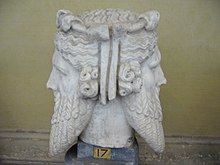
-gated communities and feudalism
don't call it the nwo, its the same owo dressed in consumer gadgets
The
paper deals with the different use of gold and copper in the Early and
Middle Copper Age on one side and the Late Copper Age cultures of the
Carpathian Basin on the other side. Transylvania was in the antiquity
one of the richest gold mining areas of Eurasia. This is demonstrated on
the basis of Roman and Medieval texts, expecially on hand of those
about the Decebalus gold treasure found by the troups of Trajan in 106
A.D.
In strong contrast to the wide use of gold (and
also of copper) in the very gold rich area of Transylvania during Early
and especially Middle Copper Age cultures (i.e. the Tiszapolgár and
Bodrogkeresztúr and their corresponding cultures in other parts of the
Carpathian Basin, among others the Lasinja culture in Transdanubia with
its gold discs) there is no trace of the use of gold in the Late Copper
Age. In the Late Copper Age also a very strong decrease in the number
and also weight of the copper artifacts can be observed, too, and it is
very remarkable that the few copper objects were daggers. This stays to
indicate wartime or at least a continuing armed unrest during Late
Copper Age. Invasions, conquests and similar events never promote
production, accumulation, hoarding and public use of gold.https://link.springer.com/chapter/10.1007/978-94-015-1292-3_7








